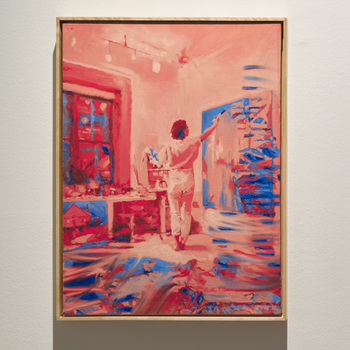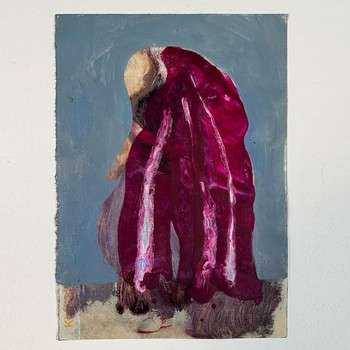
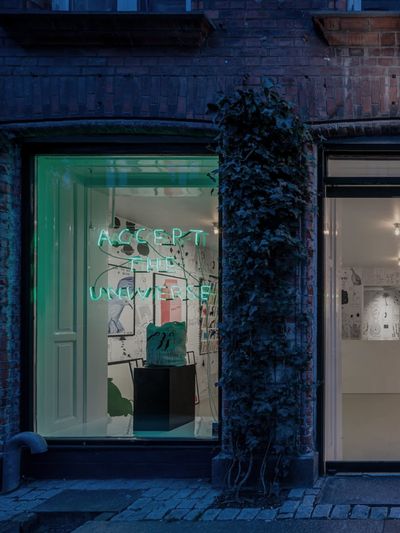
How To Get Into Art Collecting

THE AUCTIONEER
Rebecca Tooby-Desmond
Specialist & Head Of Sales For Editions At Phillips
Rebecca is both a seasoned auctioneer and head of sales for editions at Phillips – where international collectors buy and sell important 20th-century and contemporary works of art.
Start your collecting journey by seeing as much art as you possibly can. This will help you to get a sense of what it is that brings you joy and what you would like to have in your home and collection. When starting out, it can be overwhelming, but getting as much exposure to different types of art is the best way to start. This can be attending fairs and gallery openings as well as following museums, auction houses and artists on Instagram. The more you see, the more you’ll learn about the type of art that speaks to you, and then you’ll have a much clearer sense of direction.
Think about budget. Make sure it is in line with your goals so you know from the start what you can and can’t afford. This will make the process a lot more enjoyable. There are lots of options available no matter the budget, but knowing what it is you’re willing to spend will help guide you.
Always check condition, ask for photos, and buy from a reputable source, making sure that you receive all the advice you need on condition and provenance before making your purchase. If it feels too good to be true, speak to an expert at the auction house or gallery or the artist themselves. Lastly – and most importantly – buy what you love, pieces that bring you joy and those you want to live with.
I find inspiration by going to gallery shows and exhibitions, visiting art fairs, as well as through social media and by reading art publications. Many group shows exhibit works by artists around a similar theme or idea so, if you like one artist’s work, seeing a group show in which they are featured can often lead you to another artist you’re interested in. Grad shows are great because you get to see what young artists are producing. Art fairs such as Frieze and Art Basel showcase works by thousands of artists, so they are a good way to get inspiration. There are also fairs such as the Affordable Art Fair, London Original Print Fair and The Other Art Fair which have a great reputation for offering works to suit all budgets. Because I work with modern and contemporary editions, print fairs are a particular source of inspiration because artists often use edition making to explore new ideas and techniques. The medium is hugely varied, and I am always learning new things.
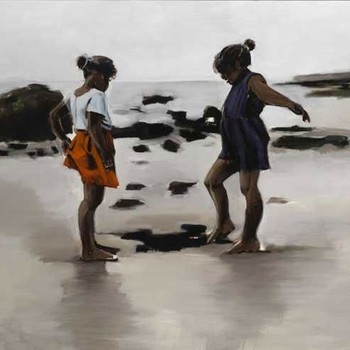
LYNETTE YIADOM-BOAKYE/TATE BRITAIN
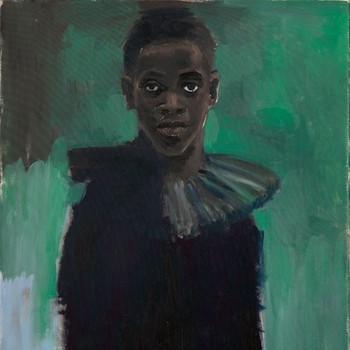
LYNETTE YIADOM-BOAKYE/TATE BRITAIN
If you like a certain gallery or museum, they will often have a great patron or membership programme. Joining it can bring opportunities to not only support them but also to receive invitations to interesting events. Attending art events such as gallery openings, artist studio visits and previews can be a great way to meet like-minded people.
I am a specialist in modern and contemporary prints. Prints or editions are a hugely versatile category which means I work with both collectors new to the art world and seasoned collectors who have built their collections over a lifetime. Prints have traditionally been seen as an entry point to collecting because you can buy editions by blue-chip artists for a fraction of the price of a painting. Once you start collecting editions, you can hone your eye by living with the artworks you love, because you can afford to buy and sell with more frequency.
At Phillips we work closely with both collectors looking to sell artworks and those looking to buy. I also provide my expertise on the art works themselves, advising on authenticity and condition, and helping collectors educate themselves further in this collecting category. The role is multifaceted, and I am lucky that there is so much variety to my day – some days are all about research and speaking to clients about their collections, and some days I am jumping on the phone to take bids from a client in our London saleroom before catching a flight to New York to auctioneer over there.
As auctioneer I am at the centre of the action – taking bids from all interested parties. The best part of the job is being a part of the journey of each artwork, from the initial valuation to bringing down the gavel for each exciting sale and ensuring the pieces go to the right new home.
Anyone can be an art collector. If you have one print you love from an exhibition for which you paid £50, you are an art collector. If you have a huge collection of works by blue-chip artists worth millions, you are also an art collector. The beauty of collecting is that it is a journey and can be a hugely rewarding and fulfilling experience, but it's important for people to approach it knowing their budget, doing their research, focusing on condition and quality, buying what they love and caring for it.

LYNETTE YIADOM-BOAKYE/SAM DAY/TATE BRITAIN
Be patient. The work you are looking for and have set your heart on may not be immediately available at your budget. That is the nature of the art market – artists are human, they evolve with their work, their subjects and style can change, and they may stop producing certain types of works. Depending on your goals and values, building a collection can take time and patience. Don't expect to build a collection overnight, and don't be discouraged if you can't afford the pieces you want right away. Over time, you can build a collection that reflects your taste and style. Above all, have fun and follow your gut.
The most common mistake people make is not asking enough questions or talking to the experts. Buying your first piece might feel intimidating, so do the research and make sure you are armed with all the facts before making the purchase. Particularly if it is a big purchase, it's important to take the time to learn about an artist’s style, career and market history before buying a work. Seek advice if you are not sure. While ultimately the decision of whether to buy a work of art is down to the individual and should reflect their own tastes, advisers can support and help make informed decisions.
Focus on buying from a reputable source. Buying through an auction house may be faster because you are directly bidding on a work and could take it away with you that same day. Buying through a gallery could take longer as it may take time to build a relationship with them and the artist, if they’re still living. The most important thing is not to feel rushed. You need to have time to research, do your due diligence, and feel sure of your decision.
Quality works of good provenance and in excellent condition will always resonate with collectors. One of the most rewarding things about the market is uniting collectors with rare-to-market and exciting works. We aim to always do as much research as possible before offering a work at auction. That said, of course the appetite for certain works fluctuates over time as we see increased popularity for certain styles and genres. Right now, we’re certainly seeing an increased focus on works by artists and categories that have historically been overlooked, such as artists from underrepresented communities. Interest also builds around highly publicised exhibitions such as the Meret Oppenheim retrospective at MoMA earlier this year, which inspired spirited bidding on works by Oppenheim in our recent New York auctions. In the editions market, we’ve seen an increase in engagement from collectors looking at how the works are made and who they are made by, focusing as much on the context and process as on the images themselves.
One of my favourite artists right now is Cecily Brown. She creates monotypes in a painterly way, seeing them as an extension of that media and not as a separate art form. Then there’s Rashid Johnson who is using innovative printmaking techniques. I also love Joan Mitchell’s prints and Grayson Perry’s work. The way Perry engages with traditional printmaking to engage with current social commentary is wonderful. Lynette Yiadom-Boakye is producing beautiful prints which are intimate versions of her monumental painted portraits, such as could be seen in her wonderful Tate Britain show.
There are lots of options for budgets of up to £10,000 throughout the 20th century and contemporary art market, if you’re looking to acquire works by blue-chip, big-name artists as well as works by ultra-contemporary emerging artists. With £10,000 you could invest in a classic Young British Artist (YBA) piece such as Damien Hirst woodcut Spot prints. Alternatively, you could acquire an exquisite modernist masterpiece such as Henri Matisse’s classic nude or dancer lithograph print. Or you could get a few pieces: for example, you could buy a Joan Miró or David Shrigley print for £1,000.
With £50,000, buyers may be able to purchase a larger work by a well-known artist – from a Picasso linocut print of one of his muses or an etching plate from his famed Vollard suite (such as those in the collection of the British Museum) through to American Pop Art and Keith Haring’s Pop Shop screen prints, or a satirical contemporary signed print by Banksy. With £100,000, buyers may want to consider investing in a significant work by a major artist such as Andy Warhol’s iconic Marilyn screen print, or a David Hockney swimming pool lithograph.
Visit Phillips.com

THE COLLECTOR & GALLERY OWNER
Anita Zabludowicz OBE
Zabludowicz Collection
Anita is the founder of Zabludowicz Collection, a private art collection focused on emerging artists, with a public ethos. Its north London gallery is free and open to all Thursday-Sunday during exhibitions.
In today’s world, I’d recommend hiring the best art adviser you can find. They will help guide you in the collecting process over time. If you’re collecting for fun, it’s best to start by looking at collecting institutional multiples and editions, and/or by visiting art fairs which showcase emerging talent, rather than just the huge art fairs. An art adviser will get to know your likes and dislikes when it comes to art, before putting together a plan of action for you. Then they will provide you with suggestions for artists and artworks you may be interested in and will take you on gallery and studio visits.
The best way to find artists is to see as much art as you can. I visit lots of institutional shows, Biennale art fairs and do many, many weekend gallery visits. We run a programme at the Zabludowicz Collection called ‘Invites’, where we invite emerging UK-based artists without UK commercial gallery representation to present a solo exhibition in the gallery space. We’ve had artists such as Lindsey Mendick and Rachel Maclean present Invites exhibitions in the past and it’s so wonderful to see how their careers have developed.
You can collect at all levels. A great place to start is to work out your favourite medium, and a budget. This will really help to narrow things down, as otherwise the choice is quite literally endless. I certainly had a little too much enthusiasm when I first started collecting art! Time is important: don’t make decisions too quickly and be patient. It’s best to be more careful and considered, rather than jump into a purchase too quickly.
If you’ve got £10,000 to spend on art, I’d start with editions. With a budget of around £50,000, that’s when you can put more focus on emerging talent. It’s worth really exploring an emerging artist who could become huge in the future. Some of my favourite artists are Albert Oehlen, Sigmar Polke, Mark Bradford, Chloe Wise, Jamian Juliano-Villani, Ed Atkins, Jon Rafman and LuYang, who very recently presented LuYang NetiNeti at the Zabludowicz Collection.
Visit ZabludowiczCollection.com

ALEXIS SOUL-GRAY

THE ART ADVISER
Jane Suitor
Art Consultant At Found Art
The founder of Found Art, Jane is an experienced adviser and collector who helps clients navigate the global art market, collecting and investing for the short and long term.
I started out in the art world at the back end of the 80s. I originally did computing at university in case I had to move into IT at some point, as art was really badly paid at the time and I didn’t know if I’d be able to make a living. Little did I know that the art world was on an upward trajectory and was going to become a megastore.
I'm deliberately not that visible. I don't really have a website, so if anyone does want to enlist my help, they just have to reach out to me on email and then we can chat about whether I can help them or not, because I only work with a small number of people. Lots of them are dedicated collectors in the UK or America and I help them with every aspect of collecting, in a confidential and discreet manner. Some of those collectors are able to gift to museums, so I facilitate that as well.
I cover every single aspect of buying art. My job means that I'm dealing with everything from the shipping to restoration, framing and hanging, which is all very unglamorous. Insurance is essential, but it’s deadly dull and not nearly as exciting as the initial acquisition. The moment the purchase has taken place, the client is responsible for the work from an insurance point of view, and I can help with that, even though it kills me! But ultimately, my job is about ascertaining what collectors are interested in doing. A lot of collectors just start out decorating their homes and then realise they've run out of wall space, so they start buying things to go into storage. My role is about educating clients as well – I encourage them all to go to as many galleries and museums as possible, and read and listen to as much as they can about art – because the more you put in, the more you get out.
I encourage all my collectors to buy what they love rather than for investment. Art can be another form of asset allocation, but it's about assessing the value prior to the acquisition, keeping an eye on the value of that work over time, and keeping abreast of the auction to see which artists are on an upward trajectory. But it is difficult, and I don't advise that someone buys purely for investment. Although those who bought works from the YBAs in the 90s have done incredibly well by buying very early on in Damien Hirst’s and Tracey Emin’s careers, there was no guarantee that was going to be the case. There are no guarantees.
If someone’s looking to fill their house with art and they've got a big budget, they should use an adviser. Remember advisers have very close relationships with commercial art galleries and there are artists that clients won't have access to without the help of an adviser. Certain artists have long waiting lists when it comes to the primary market, and advisers are able to help jump that waiting list. An art adviser will do all the talking on their behalf and, if they have a strong relationship with a commercial gallery, the gallery will know that the adviser is going to put together a coherent and exciting collection.
It’s best to see a piece in person, but it isn’t always possible. Sometimes, especially if it's an artist who is very hot right now, the client’s got to make a quick decision and they won't necessarily be able to see to the work in person, unless they're going to get themselves wherever the exhibition is. They have to gain confidence, learn to trust me – and trust their taste as well – and understand size. A lot of collectors don't always consider the size of the work of art they’re purchasing. Always carry a tape measure.
I love looking for the next big thing. Poppy Jones graduated from the Royal College of Art in 2010. I saw her work at an exhibition at The Artist Room and she's someone that I'm very excited about. Another artist is Alexis Soul-Gray who recently graduated from the Royal College of Art. I discovered both these artists on Instagram.
If you have money to spend on art, I would suggest buying a few pieces rather than just one. Go for a mix of blue-chip big names and emerging artists. From an economical point of view, you’ll have a fairly secure investment. If you're investing in someone who's already part of the canon of art history, then find someone like Ed Ruscha – he’s already part of art history, is still alive and is considered one of the most important living American artists today. With someone like him, there’s a strong chance you're not going to lose your money, to put it crudely.
Visit FoundArt.co.uk
DISCLAIMER: We endeavour to always credit the correct original source of every image we use. If you think a credit may be incorrect, please contact us at info@sheerluxe.com.
